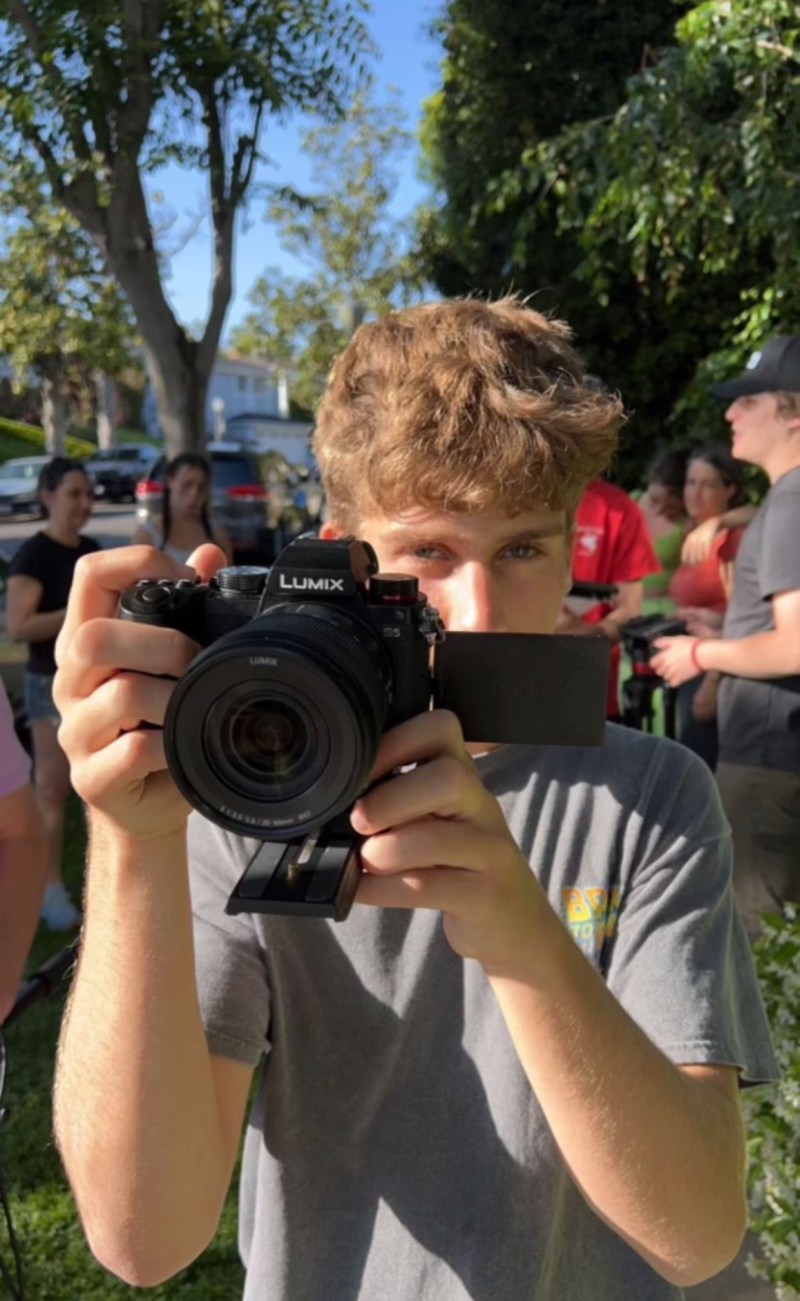When Noah Goldsmith ’27 was five years old, his father taught him how to use iMovie. Neither knew it at the time, but this moment would become defining in Goldsmith’s life. Filmmaking would go on to become his calling.
At Stanford, Goldsmith’s most recent project is with The Daily: Stanford Heart-Up Culture, a pseudo-dating show rooted in Stanford’s reputation for a startup-driven and socially inept student body.
Creativity was intertwined with Goldsmith’s childhood. During the COVID-19 pandemic lockdown, Goldsmith’s parents, both television and film writers, produced the Disney Plus show “Mighty Ducks: Game Changers” through Zoom. Witnessing a creative process unfold in his living room fostered Goldsmith’s growing fascination with film.
“My parents joke that some people are tiger parents or soccer parents,” Goldsmith said. “But I was bred to be a comedy writer pretty much. I was put through joke boot camp throughout my entire childhood.”
When Goldsmith was six, he drew up an idea with friends for a short film called “Pranks.” In eighth grade, Goldsmith and two friends created “The Sleepover,” a parody of “The Hangover,” where three kids consume too much candy, can’t remember the night before their sleepover and lose their little sister.
In the coming years, Goldsmith continued to hone his creative voice, expanding his repertoire to include movies that reflected a broader range of depth and theme.
At a sports broadcasting camp the summer before seventh grade, Goldsmith met Eli Pearl, now a frosh at New York University (NYU) and the person Goldsmith calls the closest thing he has to an official writing partner.
Even now, separated on opposite coasts, Goldsmith and Pearl still send over scripts for feedback and constantly bounce ideas off of each other.
“We were both these dorky, short, unathletic kids who really wanted to be better at sports than we were,” Pearl said about meeting Goldsmith at the sports broadcasting camp.
Throughout middle and high school, Goldsmith and Pearl collaborated on a slate of film projects, spanning genres and themes. Though their partnership is strong, their creative visions did not always align.
“We very much disagreed artistically. I have always been an NYU-experimentalist. You know, I just watched a 1929 Soviet documentary about the act of moviemaking,” Pearl said. “On the other hand, one of Noah’s favorite movies is ‘Ferris Bueller’s Day Off.’”
Despite their artistic differences, Goldsmith and Pearl’s strengths complement each other’s deficiencies: Pearl can conceptualize the big-picture narrative arc of a story, while Goldsmith is a director who can technically execute a shared vision.
As his interest in producing, writing and directing developed, Goldsmith found himself considering pursuing film as a potential career.
“It’s very much like, what does being a writer even mean? You’re sitting around writing and working on stuff, and is that even a real job?” Goldsmith said.
A senior-year project brought Goldsmith clarity: an inflection point where he recognized possibility in passion. Goldsmith wrote and directed “When in Poughkeepsie,” a film grappling with the experience of growing up, moving on and liminality through the lens of a college tour.
The film, which won Best Picture at his high school’s showcase, was a seminal experience for Goldsmith. Goldsmith said the moment of walking onstage with his entire team was a “perfect personification” of the creative process.
“I looked out into a crowd of people who enjoyed the film, who laughed, who felt emotional, who cried,” Goldsmith said. “As we were all going off to college ourselves — kind of like what happened in ‘When in Poughkeepsie’ — the movie felt like a microcosm for everything we were feeling at the time.”
Goldsmith said that in that moment, he felt a profound sense of purpose.
“It made me feel such an energy inside, like this is what I got to do,” he said.
Goldsmith was approached by Daily video editor Ananya Udaygiri ’26 with the idea to film Heart-Up Culture.
“We thought it would be funny if we made fun of the fact that all these Stanford students are into their CS, their startups, their tech. But can they find love?” Goldsmith said. “Can Stanford students find love using tech? Do they know about relationships or human connection?”
Heart-Up Culture’s pilot episode featured Carter Staggs ’27 as its awkward protagonist facing insecurity, narcissism and most notably, a catastrophic inability to talk to women, Staggs said.
Under Goldsmith’s leadership, the show’s production team extended a significant amount of creative flexibility to Staggs and other actors. Marrying a hands-off approach with unwavering support, Staggs said that Goldsmith was quick to offer words of encouragement whenever Staggs felt that his performance missed the mark.
“That sort of optimism in the director, I think, is immensely valuable,” Staggs said.
